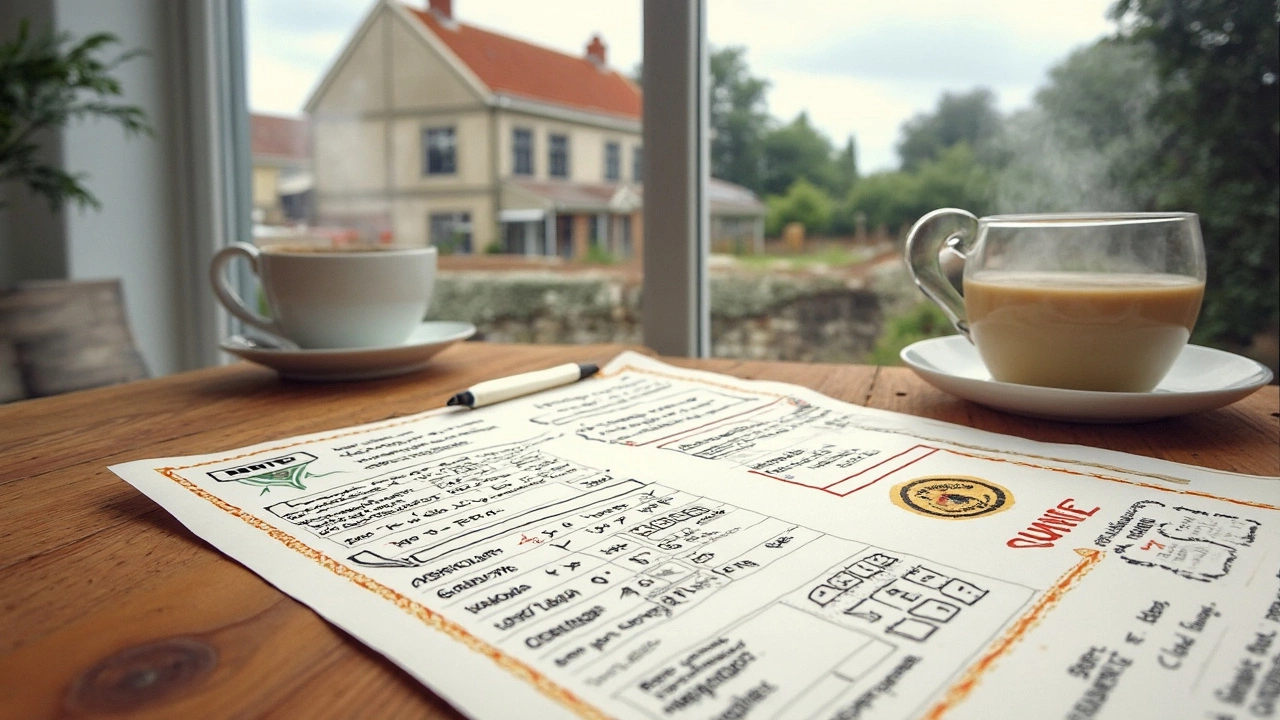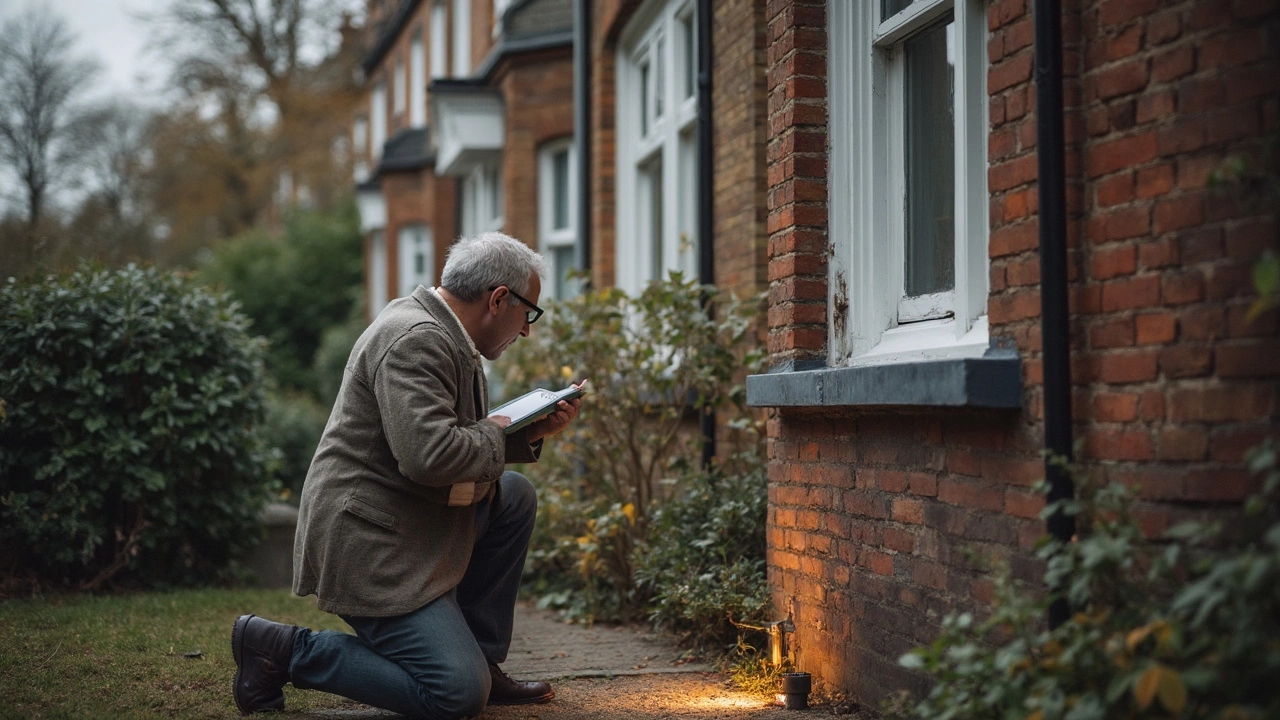Cracks popping up in your walls? Doors and windows sticking for no obvious reason? If you’re starting to wonder whether your house foundation needs a closer look, you’re not alone. Foundation issues freak a lot of homeowners out—and for good reason. Fixing a foundation can cost a ton, and getting the repairs right really matters for keeping your whole house safe.
So is fixing your own foundation actually doable? Well, it depends. While some smaller cracks or issues aren’t wild science to handle, most structural repairs are a whole different ball game. Mess up, and you could end up with worse damage or even safety hazards for everyone living under your roof.
But don’t stress yet. First off, you should know how to spot signs of trouble before things spiral. Then you can figure out what’s really safe—and worth your time—to tackle by yourself, and when it's smarter to bring in people who do this for a living. Let’s break down what’s easy DIY territory, what’s a definite “don’t touch,” plus some straightforward steps to keep foundation worries from coming back.
- Spotting Foundation Problems Early
- Which Repairs Can You Really DIY?
- Serious Jobs Best Left to the Pros
- Costs, Tools, and Common Pitfalls
- Tips to Prevent Future Damage
Spotting Foundation Problems Early
Foundations don’t go bad overnight—they usually give you plenty of signals first. The smartest move is to watch for red flags before small issues grow into expensive disasters. If you catch these things early, your chances of fixing it yourself—or at least not shelling out a fortune—go way up.
Let’s get straight to it. Here are signs your house foundation repair might need attention:
- Cracks in walls, floors, or ceilings—Check especially near windows and doors. Hairline cracks are common, but anything wider than a quarter-inch should grab your attention fast.
- Sticky doors and windows—If they stop opening or closing smoothly, your foundation might be settling or shifting.
- Uneven floors—If a ball rolls across the living room by itself, something’s messed up underneath. Look for sloping or warping in any part of the house.
- Gaps between walls and the ceiling/floor—Notice space appearing where things used to fit snug? Foundation movement can pull your house apart at the seams.
- Moisture in the basement or crawl space—Persistent dampness, smells, or visible water are classic warning shots.
According to the American Society of Civil Engineers, "Around 25% of U.S. homes experience structural distress at some point." Most folks notice warning signs inside their homes first, and floors sloping more than one inch every 20 feet are worth calling out right away.
"Don’t ignore small cracks or sticky doors—they’re often the first hints your foundation’s on the move," says Tom Silva, general contractor and TV expert on This Old House.
If you’re not sure, try this: slide a card into a wall crack and measure how wide it is. Mark the ends with pencil and check again after a month. If it’s growing, or if your doors keep getting worse, your foundation repair needs a plan, fast.
| Common Foundation Warning Signs | What To Look For |
|---|---|
| Wall/Floor Cracks | Quarter-inch wide or bigger |
| Sticky Doors/Windows | Sudden changes out of nowhere |
| Uneven Floors | Ball rolls, or you feel a slope |
| Gaps | Space at wall seams, ceiling, or floor |
| Water Intrusion | Basement stays wet or smells musty |
It’s tempting to shrug off a small crack or a stubborn door. Don’t. Spotting problems early is the first step, whether you’re aiming for a quick fix or need a pro. Save yourself big headaches by giving your home repair checklist a regular once-over, especially after big storms or long dry spells.
Which Repairs Can You Really DIY?
You might be wondering if you can tackle house foundation repair projects without professional help. The good news is, some issues are low-risk and well within reach for the average homeowner. But don’t grab the concrete just yet—knowing where to draw the line is key.
Here’s what you can actually handle yourself, with the right tools and a little patience:
- Small, hairline cracks in poured concrete: These are usually just cosmetic. You can fill them with an epoxy or polyurethane crack sealer you’ll find at any hardware store. Clean the crack, apply the sealer, and keep an eye on it for future movement.
- Minor masonry repairs: If you spot tiny gaps in foundation bricks or mortar joints (think less than 1/4 of an inch), tuckpointing with premixed mortar can help prevent more water from getting in. Always use the right mix for your climate.
- Improving drainage: Sometimes, water pooling near your foundation causes problems more than the foundation itself. You can extend downspouts, regrade the soil so water runs away from your house, or install simple French drains. None of these require heavy machinery or special training—just a shovel, some patience, and a sense of gravity.
- Sealing visible exterior concrete: Applying a water-repellent concrete sealer on exposed foundation walls helps stop moisture from seeping in. It’s an easy job with a roller and a free weekend.
Here’s a quick snapshot of repairs you can probably manage yourself, along with their level of risk and tools needed:
| Repair Type | Skill Level | Risk | Basic Tools Needed |
|---|---|---|---|
| Filling hairline cracks | Beginner | Low | Sealant, caulk gun, wire brush |
| Tuckpointing mortar joints | Beginner-Intermediate | Low | Trowel, mortar mix, gloves |
| Improving drainage | Beginner | Low | Shovel, downspout extensions |
| Sealing concrete | Beginner | Low | Roller, concrete sealer |
Don’t tackle anything that involves moving parts of your foundation, lifting the home, or dealing with wide cracks (wider than a quarter-inch). Structural repairs are where folks get in trouble. If you attempt those fixes and get it wrong, you could make things a lot worse—and more costly down the road.

Serious Jobs Best Left to the Pros
Messing with your house foundation repair might sound like a cool project, but when it comes to real structural problems, you want an expert. Some jobs are just too risky and complicated for a weekend DIY. If you’re dealing with foundation shifting, heaving, or deep cracks wider than a quarter-inch, don’t even think about breaking out a sledgehammer yourself.
Here’s the thing: foundation repairs often need specialized tools and materials you just won’t find at the local hardware store. We’re talking stuff like hydraulic piers, underpinning systems, and pressure grouting. Using the wrong material or technique can wreck the structure further and tank your home’s value.
- Major settling or sinking: If rooms are tilting, floors bounce, or you see walls separating from the house, you’re likely looking at serious foundation movement. This can mess up plumbing, electrical, and the structure itself. Professionals use methods like mudjacking or helical piers to fix this properly.
- Expansive soil and water issues: If your area gets a lot of rain or your soil expands and contracts, it can cause the foundation to move up and down—the fancy term for this is “heaving.” Fixing water-driven damage usually means installing drainage systems or even rebuilding parts of the foundation, which absolutely needs a pro.
- Major cracks: Hairline cracks might be annoying but tend to be cosmetic. But anything wider—especially horizontal or stair-step cracks in brickwork—signals structural stress. Epoxy or polyurethane injections won’t cut it if there’s real movement or instability.
- Slab foundation problems: Many houses built on concrete slabs hide their trouble until major cracks or bulges show up. Repairing these means cutting, lifting, and reinforcing concrete—a job way beyond regular tools or internet tutorials.
| Foundation Problem | DIY? | Pro Needed? |
|---|---|---|
| Filling hairline cracks | Yes | No |
| Major settling | No | Yes |
| Installing piers or jacks | No | Yes |
| Fixing water drainage issues | Sometimes | Often |
| Large or growing cracks | No | Yes |
One more tip: insurance usually won’t cover extra damage if you botch a foundation repair job yourself. That’s another reason to call in the experts if things look serious. They’ll check for hidden issues, give you a long-term fix, and stand by their work. If the job calls for heavy gear, engineering know-how, or permits, save yourself the headaches and get it done right.
Costs, Tools, and Common Pitfalls
Talking money and gear is where things get real with house foundation repair. Basic DIY fixes, like filling small cracks in concrete, can run as low as $30 if you just need a tube or two of epoxy, but that’s really for the tiny stuff. As soon as you need bigger tools—like a concrete grinder or jacks—or heavy materials like hydraulic cement, costs add up fast. Renting a hydraulic jack alone is about $40 a day, and a good-quality concrete patch kit goes for $50 and up. If your project involves digging, add the cost of shovels, wheelbarrows, and soil disposal. Before you know it, you're already hundreds in, and that’s just for a simple DIY foundation fix.
Here’s a look at the ballpark costs for some common supplies and rentals:
| Item | Average Cost (USD) |
|---|---|
| Epoxy Crack Filler | $30 - $70 |
| Hydraulic Cement | $20 - $50 |
| Concrete Grinder Rental (per day) | $65 |
| Hydraulic Jack Rental (per day) | $40 |
| Dust Mask, Goggles, Gloves | $25 |
Now, let’s talk tools. At absolute minimum for small repairs, you’ll want:
- Putty knife or trowel
- Heavy-duty gloves and goggles
- Caulk gun (for fillers or sealants)
- Wire brush (for cleaning cracks)
- Bucket and sponge
For any job involving movement (like jacking up a settled corner), you’ll need at least one hydraulic jack, wood shims, and supports. Goof up, and even with all the right tools, you can make things worse. That’s one of the biggest reasons people get in trouble with home repair—they underestimate what can go wrong.
Pitfalls? There are plenty. Here are the main ones people hit all the time:
- Bad diagnosis: Mistaking harmless cracks for real problems, or vice versa. You end up fixing the wrong thing.
- Rushing prep: Not fully cleaning or drying cracks leads to sealants peeling right off.
- Ignoring water: Skipping drainage fixes just means patch jobs will fail again when it rains.
- Overusing fillers: Trying to fill a crack too wide (half an inch or more) with DIY materials, when it really needs pro help or structural repair.
- Not checking structure: Moving or lifting parts of your house without supporting them properly. This can crack walls, break pipes, or worse.
It’s way too easy to burn through time and money chasing foundation cracks if you don’t know the full story. Always step back and ask yourself: Is this a short-term fix, or am I making things worse long term? When in doubt, grab some pro advice before opening up your wallet—or breaking out the tools.

Tips to Prevent Future Damage
If you’re worried about future house foundation repair, good news: there’s a lot you can do to lower your risk. Most foundation cracks and settling start with moisture problems, so controlling water around your house is the first step.
- Keep gutters clean and working. Clogged gutters dump water next to your foundation, which can quickly get inside. Make sure downspouts push water at least five feet away from your walls. Extensions are cheap and easy to install.
- Fix grading problems. If your yard slopes toward the house, rain soaks right into your foundation—not away from it. Bring in a bit of dirt and regrade so water naturally flows off to your yard, not your home’s base.
- Watch for plumbing leaks under the house. Leaking pipes are a nightmare for foundations. Spot leaks early by checking your water bill for unexpected spikes or looking for damp spots in crawl spaces.
- Don’t let tree roots grow too close. Big trees may look great, but their roots can shift the soil, causing your foundation to settle unevenly. Keep big plants at least 10 to 15 feet from your home—further for really huge ones.
- Maintain a steady moisture level in the soil. Letting the dirt dry and shrink, then flood and swell, puts lots of stress on your foundation. Water your yard as needed (especially in dry months), but don’t create swampy spots.
If you’re curious how much of a difference water management makes, check this out:
| Prevention Step | Potential Reduction in Foundation Issues (%) |
|---|---|
| Proper Gutter Maintenance | Up to 65% |
| Correct Yard Grading | About 45% |
| Early Leak Detection | Up to 30% |
Sticking to these basics doesn’t mean you’ll never have to worry about foundation repair again, but it does make a huge difference. Little habits—like keeping water away from your home and checking for leaks—can save you from bigger headaches (and bills) down the line. Stay on top of things, and your foundation will stick around for the long haul.





